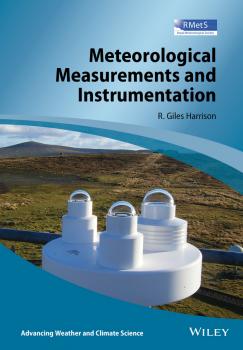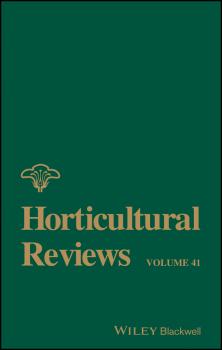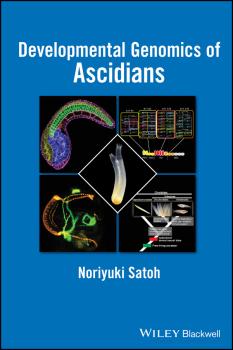Прочая образовательная литература
Различные книги в жанре Прочая образовательная литератураIntroduction to Computational Chemistry
Introduction to Computational Chemistry 3rd Edition provides a comprehensive account of the fundamental principles underlying different computational methods. Fully revised and updated throughout to reflect important method developments and improvements since publication of the previous edition, this timely update includes the following significant revisions and new topics: * Polarizable force fields * Tight-binding DFT * More extensive DFT functionals, excited states and time dependent molecular properties * Accelerated Molecular Dynamics methods * Tensor decomposition methods * Cluster analysis * Reduced scaling and reduced prefactor methods Additional information is available at: www.wiley.com/go/jensen/computationalchemistry3
Meteorological Measurements and Instrumentation
This book describes the fundamental scientific principles underlying high quality instrumentation used for environmental measurements. It discusses a wide range of in situ sensors employed in practical environmental monitoring and, in particular, those used in surface based measurement systems. It also considers the use of weather balloons to provide a wealth of upper atmosphere data. To illustrate the technologies in use it includes many examples of real atmospheric measurements in typical and unusual circumstances, with a discussion of the electronic signal conditioning, data acquisition considerations and data processing principles necessary for reliable measurements. This also allows the long history of atmospheric measurements to be placed in the context of the requirements of modern climate science, by building the physical science appreciation of the instrumental record and looking forward to new and emerging sensor and recording technologies.
Chemoinformatics for Drug Discovery
Chemoinformatics strategies to improve drug discovery results With contributions from leading researchers in academia and the pharmaceutical industry as well as experts from the software industry, this book explains how chemoinformatics enhances drug discovery and pharmaceutical research efforts, describing what works and what doesn't. Strong emphasis is put on tested and proven practical applications, with plenty of case studies detailing the development and implementation of chemoinformatics methods to support successful drug discovery efforts. Many of these case studies depict groundbreaking collaborations between academia and the pharmaceutical industry. Chemoinformatics for Drug Discovery is logically organized, offering readers a solid base in methods and models and advancing to drug discovery applications and the design of chemoinformatics infrastructures. The book features 15 chapters, including: What are our models really telling us? A practical tutorial on avoiding common mistakes when building predictive models Exploration of structure-activity relationships and transfer of key elements in lead optimization Collaborations between academia and pharma Applications of chemoinformatics in pharmaceutical research—experiences at large international pharmaceutical companies Lessons learned from 30 years of developing successful integrated chemoinformatic systems Throughout the book, the authors present chemoinformatics strategies and methods that have been proven to work in pharmaceutical research, offering insights culled from their own investigations. Each chapter is extensively referenced with citations to original research reports and reviews. Integrating chemistry, computer science, and drug discovery, Chemoinformatics for Drug Discovery encapsulates the field as it stands today and opens the door to further advances.
High-Frequency Magnetic Components
A unique text on the theory and design fundaments of inductors and transformers, updated with more coverage on the optimization of magnetic devices and many new design examples The first edition is popular among a very broad audience of readers in different areas of engineering and science. This book covers the theory and design techniques of the major types of high-frequency power inductors and transformers for a variety of applications, including switching-mode power supplies (SMPS) and resonant dc-to-ac power inverters and dc-to-dc power converters. It describes eddy-current phenomena (such as skin and proximity effects), high-frequency magnetic materials, core saturation, core losses, complex permeability, high-frequency winding resistance, winding power losses, optimization of winding conductors, integrated inductors and transformers, PCB inductors, self-capacitances, self-resonant frequency, core utilization factor area product method, and design techniques and procedures of power inductors and transformers. These components are commonly used in modern power conversion applications. The material in this book has been class-tested over many years in the author’s own courses at Wright State University, which have a high enrolment of about a hundred graduate students per term. The book presents the growing area of magnetic component research in a textbook form, covering the foundations for analysing and designing magnetic devices specifically at high-frequencies. Integrated inductors are described, and the Self-capacitance of inductors and transformers is examined. This new edition adds information on the optimization of magnetic components (Chapter 5). Chapter 2 has been expanded to provide better coverage of core losses and complex permeability, and Chapter 9 has more in-depth coverage of self-capacitances and self-resonant frequency of inductors. There is a more rigorous treatment of many concepts in all chapters. Updated end-of-chapter problems aid the readers’ learning process, with an online solutions manual available for use in the classroom. Provides physics-based descriptions and models of discrete inductors and transformers as well as integrated magnetic devices New coverage on the optimization of magnetic devices, updated information on core losses and complex permeability, and more in-depth coverage of self-capacitances and self-resonant frequency of inductors Many new design examples and end-of-chapter problems for the reader to test their learning Presents the most up-to-date and important references in the field Updated solutions manual, now available through a companion website An up to date resource for Post-graduates and professors working in electrical and computer engineering. Research students in power electronics. Practising design engineers of power electronics circuits and RF (radio-frequency) power amplifiers, senior undergraduates in electrical and computer engineering, and R & D staff.
Electromagnetic Modeling and Simulation
This unique book presents simple, easy-to-use, but effective short codes as well as virtual tools that can be used by electrical, electronic, communication, and computer engineers in a broad range of electrical engineering problems Electromagnetic modeling is essential to the design and modeling of antenna, radar, satellite, medical imaging, and other applications. In this book, author Levent Sevgi explains techniques for solving real-time complex physical problems using MATLAB-based short scripts and comprehensive virtual tools. Unique in coverage and tutorial approach, Electromagnetic Modeling and Simulation covers fundamental analytical and numerical models that are widely used in teaching, research, and engineering designs—including mode and ray summation approaches with the canonical 2D nonpenetrable parallel plate waveguide as well as FDTD, MoM, and SSPE scripts. The book also establishes an intelligent balance among the essentials of EM MODSIM: The Problem (the physics), The Theory and Models (mathematical background and analytical solutions), and The Simulations (code developing plus validation, verification, and calibration). Classroom tested in graduate-level and short courses, Electromagnetic Modeling and Simulation: Clarifies concepts through numerous worked problems and quizzes provided throughout the book Features valuable MATLAB-based, user-friendly, effective engineering and research virtual design tools Includes sample scenarios and video clips recorded during characteristic simulations that visually impact learning—available on wiley.com Provides readers with their first steps in EM MODSIM as well as tools for medium and high-level code developers and users Electromagnetic Modeling and Simulation thoroughly covers the physics, mathematical background, analytical solutions, and code development of electromagnetic modeling, making it an ideal resource for electrical engineers and researchers.
Geology of the Alps
The Alps, with their outstanding outcrop conditions, represent a superb natural laboratory for many geological processes, and have played a crucial role in the history of geology. This book gives an up-to-date and holistic overview of the key aspects of Alpine geology. After a brief presentation of the plate tectonic framework, the rock suites are discussed, starting with the pre-Triassic crystalline basement, followed by Paleozoic, Mesozoic and Cenozoic sedimentary sequences. The lithological description of the rock types is supplemented by a discussion of their paleogeographic and plate tectonic contexts. The book goes on to describe the structure of the Alps (including the Jura Mountains and the Alpine foreland to the north and south) illustrated by numerous cross-sections. The evolution of the Alps as a mountain chain incorporates a discussion of the Alpine metamorphic history and a compilation of orogenic timetables. The final sections cover the evolution of Alpine drainage patterns and the region’s glacial history. Readership: The book is essential reading for students and lecturers on Alpine courses and excursions, and all earth-scientists interested in the geology of the region.
Horticultural Reviews, Volume 41
This latest volume in the Horticultural Reviews Series presents the most recent analyses of innovations in horticultural science and technology. Covering both basic and applied research, Volume 41 incorporates a wide variety of horticultural topics including the horticulture of fruits, vegetables, nut crops, and ornamentals. Specialized researchers and the broader community of horticultural scientists and student may benefit from this research tool.
Keynotes in Organic Chemistry
This concise and accessible book provides organic chemistry notes for students studying chemistry and related courses at undergraduate level, covering core organic chemistry in a format ideal for learning and rapid revision. The material is organised so that fundamental concepts are introduced early, then built on to provide an overview of the essentials of functional group chemistry and reactivity, leading the student to a solid understanding of the basics of organic chemistry. Graphical presentation of information is central to the book, to facilitate the rapid assimilation, understanding and recall of critical concepts, facts and definitions. Students wanting a comprehensive and accessible overview of organic chemistry to build the necessary foundations for a more detailed study will find this book an ideal source of the information they require. In addition, the structured presentation, highly graphical nature of the text and practice problems with outline answers will provide an invaluable framework and aid to revision for students preparing for examinations. Keynotes in Organic Chemistry is also a handy desk reference for advanced students, postgraduates and researchers. For this second edition the text has been completely revised and updated. Colour has been introduced to clarify aspects of reaction mechanisms, and new margin notes to emphasise the links between different topics. The number of problems have been doubled to approximately 100, and includes spectra interpretation problems. Each chapter now starts with diagrams to illustrate the key points, and ends with a list of key reactions and a worked example.
Cellulosic Energy Cropping Systems
Cellulosic Energy Cropping Systems presents a comprehensive overview of how cellulosic energy crops can be sustainably produced and converted to affordable energy through liquid fuels, heat and electricity. The book begins with an introduction to cellulosic feedstocks, discussing their potential as a large-scale sustainable energy source, and technologies for the production of liquid fuels, heat and electricity. Subsequent chapters examine miscanthus, switchgrass, sugarcane and energy cane, sorghums and crop residues, reviewing their phylogeny, cultural practices, and opportunities for genetic improvement. This is followed by a detailed focus on woody crops, including eucalyptus, pine, poplar and willow. Critical logistical issues associated with both herbaceous and woody feedstocks are reviewed, and alternate strategies for harvesting, transporting, and storing cellulosic materials are also examined. The final sectionof the booktackles the challenge of achieving long-term sustainability, addressing economic, environmental and social factors. Cellulosic Energy Cropping Systems is a valuable resource for academics, students and industry professionals working in the field of biomass cultivation and conversion, bioenergy, crop science and agriculture. Topics covered include: Identifying suitable cellulosic energy crops that are adapted to a wide range of climates and soils Best management practices for sustainably growing, harvesting, storing, transporting and pre-processing these crops The development of integrated cellulosic energy cropping systems for supplying commercial processing plants Challenges and opportunities for the long-term sustainability of cellulosic energy crops This book was conceived and initiated by David I. Bransby, Professor of Energy and Forage Crops in the Department of Crop, Soil and Environmental Sciences at Auburn University, USA. For more information on the Wiley Series in Renewable Resources, visit www.wiley.com/go/rrs
Developmental Genomics of Ascidians
The simplicity and lack of redundancy in their regulatory genes have made ascidians one of the most useful species in studying developmental genomics. In Developmental Genomics of Ascidians, Dr. Noriyuki Satoh explains the developmental genomics of ascidians, stresses the simplicity of Ciona developmental system, and emphasizes single-cell level analyses. This book actively accentuates the advantages of using ascidians as model organisms in an up-and-coming field of developmental genomics.









